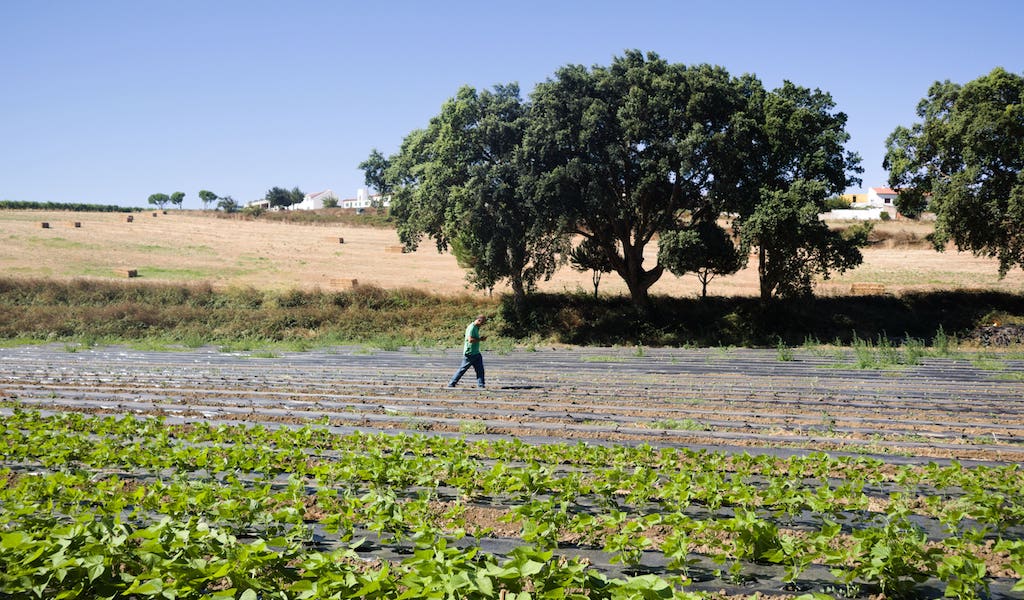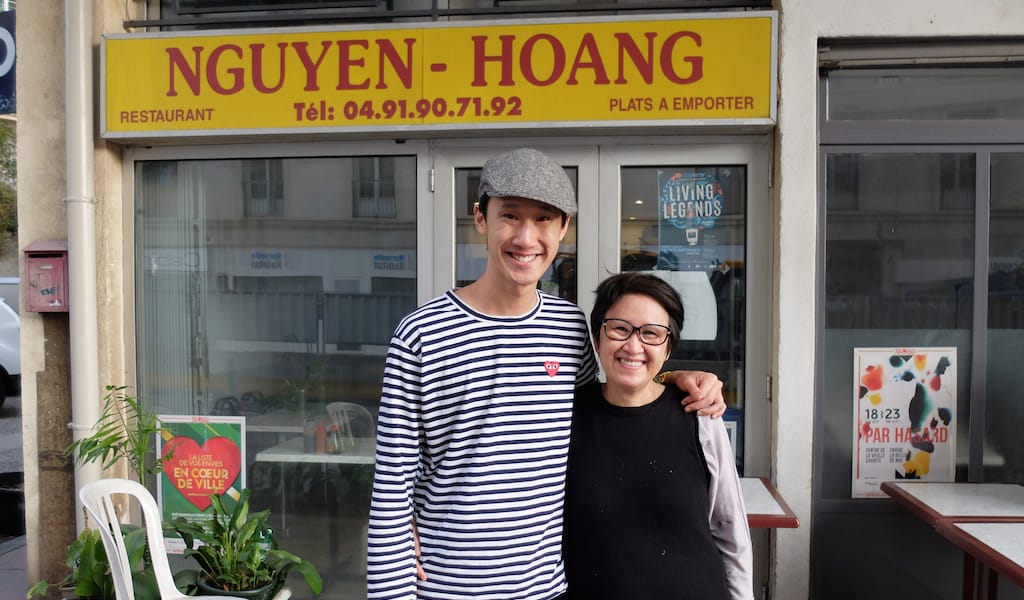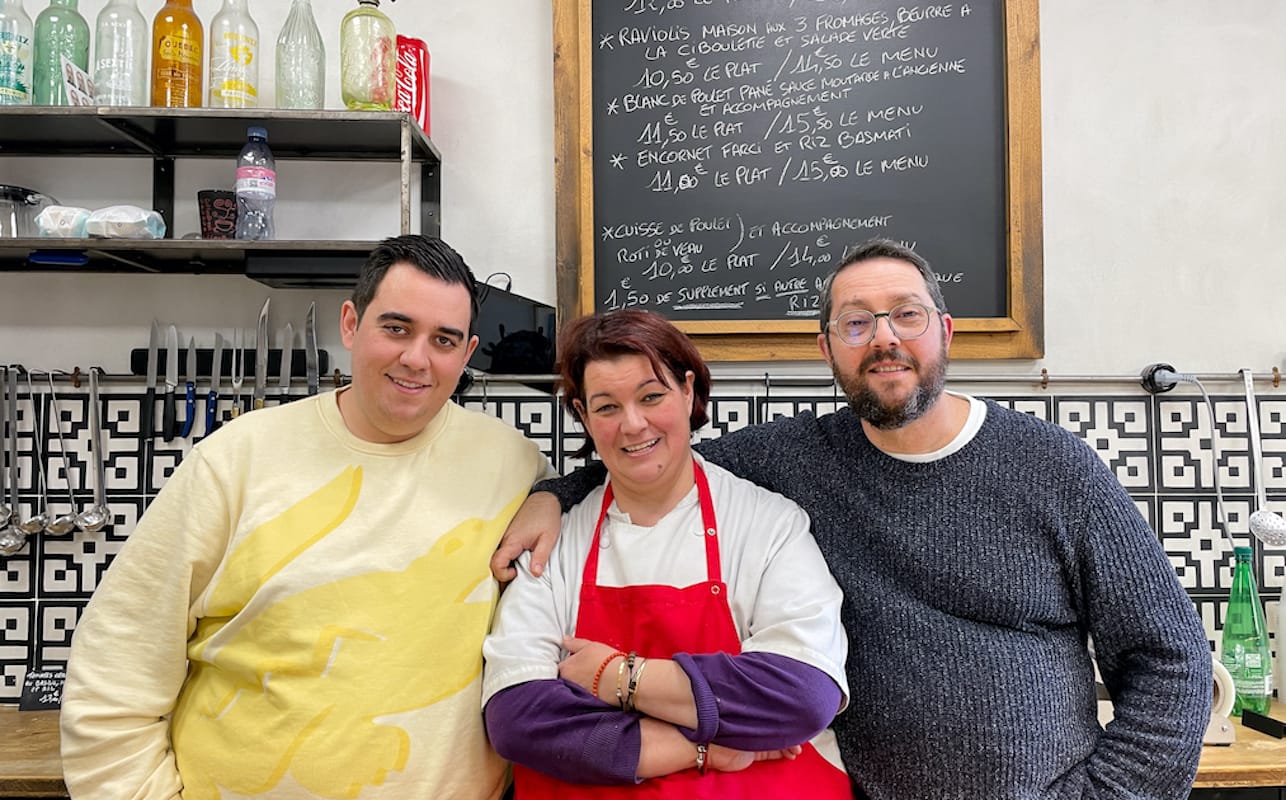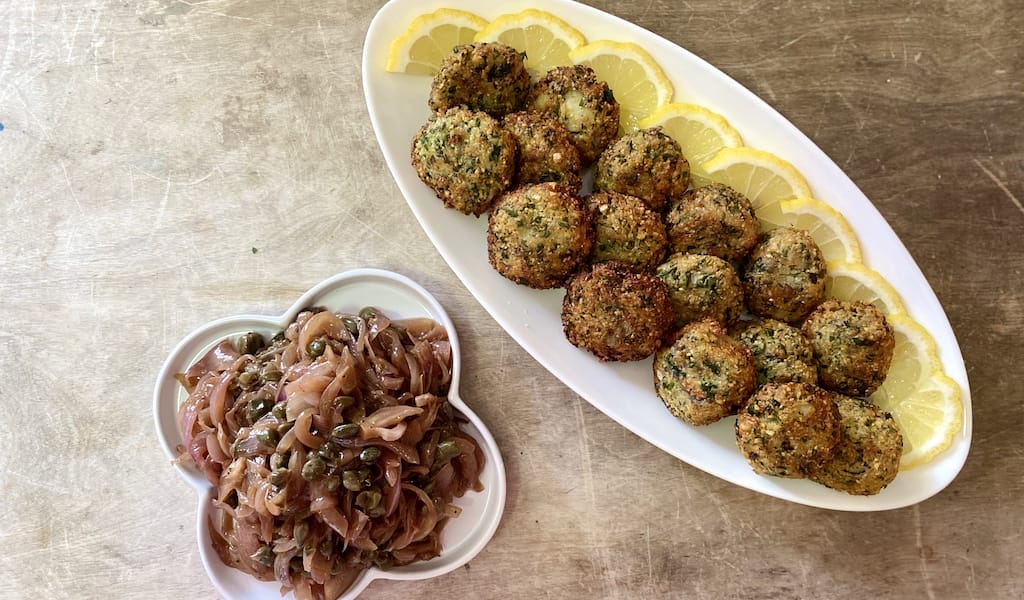If we had to describe the landscape, idyllic would be the first word to come to mind. But while the sunflowers initially command our attention, our eyes soon drift downward, where tomatoes of different shapes and colors, from yellow to red, orange green to black, are growing bigger and ripening.
Brothers Miguel and Diogo Neiva Correia, the two farmers behind Hortelão do Oeste, are showing us around this immense vegetable garden. It’s a hot late August day in most of Portugal, but at the farm, which is located one hour north of Lisbon, near Runa, in the municipality of Torres Vedras, it’s cool and breezy. Miguel and Diogo are meticulous, telling us all about the tomatoes, peppers and corn in great detail.
The farm is by no means a secret – it supplies tomatoes and peppers to some of the best restaurants in Lisbon. The brothers’ produce is so good that it has earned them a place in João Rodrigues’ Projecto Matéria, an online database that promotes Portuguese farmers and celebrates them as fundamental elements of Portuguese culture. João, the renowned chef of the Michelin-starred restaurant Feitoria, is right by our side as Miguel and Diogo lead us through rows of fragrant tomatoes. He’s brought us here today to talk more about the non-profit project he founded.

The talented chef first started mapping Portuguese producers in 2016, investing his own time and money in what was then simply a personal project. After observing how people commonly consume food nowadays, without considering its origins, how it’s produced and who is behind it, he started searching for the answers to these simple questions. “Producers are the guardians of the territory, know-how, traditions, customs and, ultimately, our identity,” he tells us. “I was more and more interested in them but also about sharing this information I had with other people, especially chefs, and people connected with the food [industry].”
João has been meticulous in his cataloguing, often devoting many days to fieldwork, researching, interviewing and visiting with the farmers and producers. Writers such as Patrícia Serrado and Tiago Pais (one of CB’s Lisbon correspondents) have joined him on his quest, with the growing database becoming more valuable with each producer added.
“Producers are the guardians of the territory, know-how, traditions, customs and, ultimately, our identity.”
Hortelão do Oeste is one of the project’s featured farms. Co-owner Miguel worked for 12 years as a chef, including with the fine-dining chef Aimé Barroyer at Pestana Palace and Tavares, before eventually tiring of kitchens. His family had some land, so he traded cooking for farming and in the process became something of a tomato whisperer – listening to him talk about his tomatoes is quite something.
Today he cultivates more than 200 different varieties, including the Yellow Oxheart and Dancing with Smurfs (a type of black cherry tomato). In Lisbon, his tomatoes are on the menu at Taberna Sal Grosso, Prado, Feitoria, Taberna da Rua das Flores and Taberna do Calhau, among other top spots. All told he supplies around 30 or 40 places in Lisbon, especially in the summertime when the tomatoes are in season. While the farm is not certified as organic due to all the bureaucracy involved, production is still seasonal and sustainable – there are no greenhouses here.
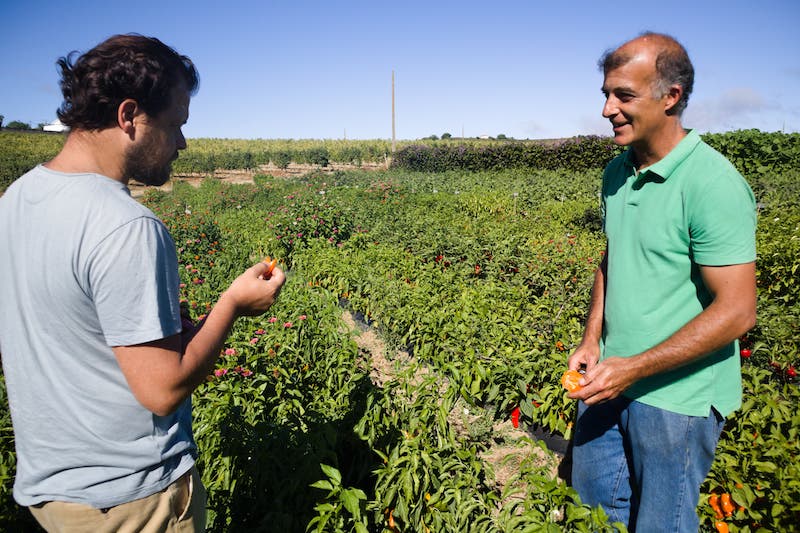
Although he began farming a 300-meter area in 2016, Miguel now has 50 hectares in two plots with around 70 different vegetables from cabbages to turnips, lettuce, eggplant, wheat (the Portuguese variety barbela) and now corn, which he is still testing. On our walk through the fields, João opens a young corncob for us, and it’s surprisingly sweet. The chef is happily tasting and smelling every vegetable and herb as we go, and constantly hands us things to try, some of which we have never tasted before like cinnamon basil. Even without listening to the conversation closely, you can tell by their interactions that João and Miguel speak the same language.
João met Miguel when the farmer came knocking on his restaurant door in 2016, offering a taste of his goods. The chef says he still remembers the tomatoes that were in Miguel’s basket, so varied and delicious. In his restaurant, João follows the seasons and his Menu Matéria reflects all his research. “I work directly with people like Miguel, either in vegetables or fruit or fish. People that I trust in who bring me the best of each season, we have created this dynamic. For instance, in December you won’t find a dish with tomato or strawberries in the restaurant,” he says.
Projecto Matéria started as the result of the research João did for his work. But now the website feels more like a public service, sharing information, knowledge and contacts. It is also open to participation and suggestions. Some chefs are already actively contributing but others prefer to keep their sources to themselves. “I could keep this to myself but I don’t think this would benefit the country, I think this can actually do something for the country,” João says. Turismo de Portugal, the country’s tourism board, agrees – they started supporting the project this year.
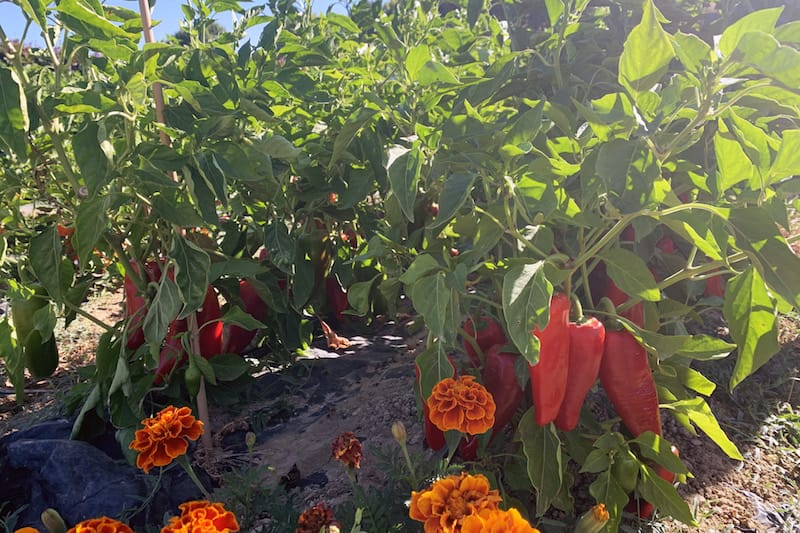
“We ended up creating a network and a sense of community. When I started the research I talked to a lot of people, but even chefs in the region didn’t know [about] the producers we eventually found,” he adds.
It’s also a boon for the producers. Miguel adds that it’s hard not using pesticides or machines – all of his produce is hand picked – while the costs of distribution can be quite high. Hortelão do Oeste delivers a basket of seasonal produce twice a week to customers in Lisbon and Cascais, and Miguel is the one who prepares all of them.
But all the hard work is worth it. The more people know about producers like Miguel, the larger this “paradise garden,” as João calls it, can grow.
 January 5, 2022 Nguyen-Hoang
January 5, 2022 Nguyen-Hoang
After the Vietnamese War, many of the refugees bound for France landed in Paris. A […] Posted in Marseille January 11, 2023 Comme à la Maison: Takeout, French Style
January 11, 2023 Comme à la Maison: Takeout, French Style
Prior to the popularity of French bouillon restaurants in Paris in the mid 1800s, […] Posted in Marseille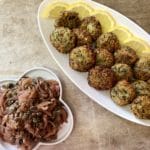 June 19, 2020 Recipe
June 19, 2020 Recipe
Despite Greece’s small size, the country has many different regional cuisines, with […] Posted in Athens
Published on September 09, 2020
Related stories
January 5, 2022
MarseilleAfter the Vietnamese War, many of the refugees bound for France landed in Paris. A minority spread out to other French cities like Toulouse, Lyon and Marseille, the latter being a ville refuge (refuge city) due to its bustling port. The small community in Marseille used to be concentrated near Joliette, before its building boom.…
January 11, 2023
MarseillePrior to the popularity of French bouillon restaurants in Paris in the mid 1800s, (restaurants that served a simple piece of meat in a soup stock for a good price) there was the French traiteur. A precursor to the restaurant as we know it, a traiteur (the word can roughly be translated as “caterer”) offers…
June 19, 2020
AthensDespite Greece’s small size, the country has many different regional cuisines, with Greek island cuisine – particularly that of the Cyclades, which is rooted in simplicity and seasonality – being one of my favorites. The small, dry islands developed a kind of cucina povera, or “peasant cooking,” that was influenced in part by the Venetians, who…







































